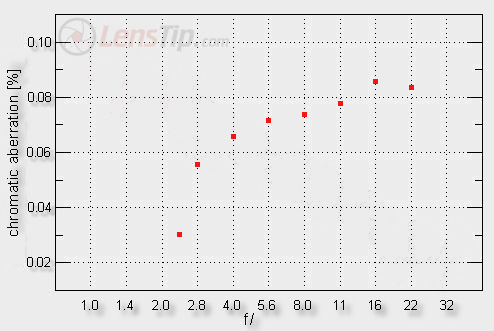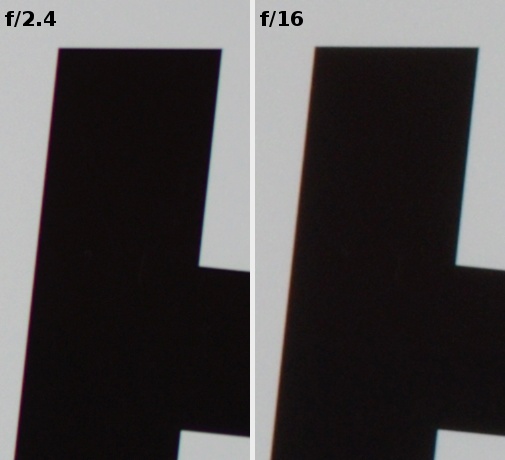Pentax smc DA 35 mm f/2.4 AL
5. Chromatic aberration
The mystery of the slow resolution increase on the edge of the frame after stopping down the aperture is partially solved by the graph below.

Please Support UsIf you enjoy our reviews and articles, and you want us to continue our work please, support our website by donating through PayPal. The funds are going to be used for paying our editorial team, renting servers, and equipping our testing studio; only that way we will be able to continue providing you interesting content for free. |
- - - - - - - - - - - - - - - - - - - - - - - - - - - - - - - - - - - - - - - - - - - - - - - -
Lateral chromatic aberration shows a very distinct growing trend with the increase of the aperture value. It prevents the resolution from reaching levels as high as those which could be available if the aberration was corrected in a perfect way.
We must emphasize very strongly the fact that the lateral chromatic aberration in itself is not a huge problem of the tested lens. Near the maximum relative aperture it remains negligible and only after a significant stopping down it reaches the medium level. Here the Pentax wins the duel with the Nikkor 1.8/35 which showed high lateral aberration – ranging from 0.13 to 0.17%.
 |






